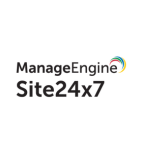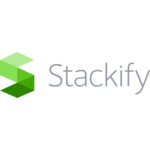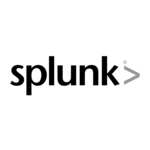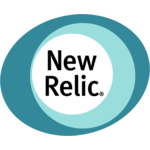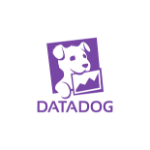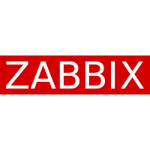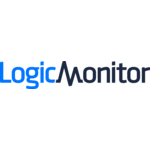
TechnologyCounter provides genuine, unbiased real user reviews to help buyers make informed decisions. We may earn a referral fee when you purchase through our links, at no extra cost to you.
List of 15 Best Application Performance Monitoring Tools
Showing 1 - 15 of 58 products
ManageEngine Applications Manager
Can handle 50,000 applications at a time
Upgrade your application processing system by utilizing the dynamic and efficient application monitoring software, ManageEngine Applications Manager, which eliminates manual tasks such as application upload, information verification, and service del...Read ManageEngine Applications Manager Reviews
ManageEngine Site24x7 is a SaaS-based, AI-powered observability platform for DevOps and IT operations. The cloud-based platform’s broad capabilities help predict, analyze, and troubleshoot problems with end-user experience, applications, microservi...Read ManageEngine Site24x7 Reviews
Stackify Retrace is a software designed to streamline application performance monitoring for developers and IT teams. With its advanced features interface, Retrace provides unmatched visibility into the health and performance of web applications, mak...Read Stackify Retrace Reviews
Dynatrace is trusted by some of the worlds leading brands as a top-tier software intelligence platform. With its advanced features and innovative technology, Dynatrace provides real-time monitoring, deep insights, and automatic problem resolution for...Read Dynatrace Reviews
AppDynamics is a software that enables businesses to monitor, troubleshoot and optimize their applications and systems in real-time. With its advanced features interface, AppDynamics allows users to gain valuable insights, enhance performance and del...Read AppDynamics Reviews
Riverbed - your solution for optimizing digital performance and enhancing user experience. With Riverbed, businesses can seamlessly connect, analyze, and streamline their applications and networks, driving productivity and cost-efficiency. Upgrade yo...Read Riverbed Reviews
BMC Software is a leading provider of innovative IT solutions for businesses of all sizes. With a focus on simplifying and streamlining processes, their software offerings empower companies to optimize their IT environments and drive digital transfor...Read BMC Software Reviews
nGeniusONE is the revolutionary software that changes the way organizations monitor and manage their networks. With its advanced capabilities, nGeniusONE provides businesses with real-time insights, intelligent analysis, and proactive troubleshooting...Read nGeniusONE Reviews
KeyCDN is a content delivery network designed to optimize website performance and improve user experience. With its lightning-fast speeds and global reach, KeyCDN is an essential tool for businesses looking to provide seamless is a delivery of their...Read KeyCDN Reviews
Splunk Light is a data analysis tool designed for small to medium-sized businesses. With its intuitive interface features, Splunk Light allows businesses to efficiently collect, analyze, and visualize data to gain valuable insights and make informed...Read Splunk Light Reviews
New Relic is a leading software platform that helps businesses maximize their digital performance. With powerful tools and insights, New Relic enables organizations to monitor and optimize their applications, websites, and infrastructure in real-time...Read New Relic Reviews
Sumo Logic is a and innovative software that revolutionizes the way businesses analyze, manage, and secure their data. With its advanced technology and user-friendly interface, Sumo Logic helps organizations gain valuable insights and make informed d...Read Sumo Logic Reviews
Datadog APM is a tool designed to help businesses monitor and optimize their application performance. With its advanced features and user-friendly interface, Datadog APM makes it easy for companies to gain valuable insights into their application hea...Read Datadog APM Reviews
Zabbix, is a solution for monitoring and managing your IT infrastructure. With its powerful features interface, Zabbix will help you stay on top of your network, servers, and applications. Stay proactive and ensure smooth performance with Zabbix. Dis...Read Zabbix Reviews
LogicMonitor is an innovative software that helps businesses of all sizes monitor and optimize their IT infrastructure. With its advanced features and user-friendly interface, businesses can easily gather performance data, detect anomalies, and preve...Read LogicMonitor Reviews
- What Is Application Performance Monitoring Tools?
- Top Reasons Why Businesses Need Application Performance Monitoring Tools?
- What Are the Top Key Features of Application Performance Monitoring Tools?
- What Are the Top Benefits of Application Performance Monitoring Tools?
- What Are the Steps to Choose the Right Application Performance Monitoring Tools?
- What Are the Types of Application Performance Monitoring Tools for Different Industries?
- What Are the Technology Trends for Best Application Performance Monitoring Tools?
- What Are the Deployment Options for Application Performance Monitoring Tools?
What Is Application Performance Monitoring Tools?
Application Performance Monitoring tools refer to software services utilized by enterprises to monitor the real-time performance of their applications and systems. In addition, the speed, resource consumption, and dependability of an application are also assessed.
The utilization of Application Performance Monitoring (APM) solutions is crucial for enterprises as they enable the prompt and effective identification and resolution of issues. This ensures that applications operate seamlessly and adhere to the specified performance metrics. APM technologies commonly detect performance bottlenecks encompassing hardware difficulties, resource consumption, and code-related challenges
Depending on the requirements of a company, a diverse array of metrics can be assessed, encompassing response time, throughput, average latency, server load, and errors, among others. In addition to their primary functionalities, numerous application performance management software offer users the capability to incorporate personalized metrics, thus enhancing their ability to observe and analyze data.
APM tools facilitate the identification of service-related issues, detection of possible risks, anticipation of system performance, and proactive capacity planning, thereby mitigating problems before they arise.
Furthermore, application performance monitoring software frequently offers reporting and alerting capabilities that enable managers to continuously monitor services, receive information regarding changes or concerns, and expedite problem detection and diagnosis.
In summary, Application Performance Monitoring solutions facilitate the enhancement of application and system dependability and performance for IT teams, while diminishing the duration needed to detect and resolve problems.
Top Reasons Why Businesses Need Application Performance Monitoring Tools?
1. Preventing application outages: Application performance software provide the capability to identify early indicators of an impending application outage, hence facilitating the prioritization of bug fixes or server updates.
2. Enhancing customer experiences: Application performance management software technologies provide organizations with valuable insights into the impact of application performance on user experience, facilitating the prompt identification and resolution of issues.
3. Diagnosing problems quickly: Once a problem has been found, Application Performance Monitoring (APM) technologies offer comprehensive insights into the performance of an application's infrastructure, enabling the rapid identification of underlying problems.
4. Spotting performance trends: Application performance monitoring tools provide valuable insights into the dynamic evolution of application performance over time. This enables enterprises to strategize and proactively address potential performance issues.
5. Improving debugging capabilities: The collection of performance data enables the more efficient and accurate debugging of problems.
6. Improving application scalability: The best application performance monitoring software can efficiently and precisely detect processing bottlenecks and scalability concerns, hence enhancing the overall scalability of applications.
7. Optimizing applications: Application performance management software offers valuable data that aids developers in enhancing the performance of apps.
8. Unlocking the full potential of cloud applications: APM software plays a crucial role in providing essential data to maintain the optimal performance of cloud-based platforms.
9. Ensuring compliance: The use of APM systems can offer extensive audit trails and contribute to the improvement of compliance with government and industry regulations.
10. Reducing costs: By enhancing their performance, firms have the potential to decrease their operational expenses.
11. Accessing real-time performance metrics: Application performance monitoring system technologies provide users with the ability to obtain real-time performance measurements and receive notifications when performance levels exceed predetermined acceptable thresholds.
12. Improving software development cycles: By acquiring a deeper comprehension of the operational performance of applications in practical settings, software engineers are empowered to make more educated judgments when undertaking optimization efforts for those applications.
13. Locating problem areas: Application performance monitoring tools facilitate the identification of problematic regions that impede applications from operating at their optimal level of performance.
14. Identifying and resolving conflicts: Application Performance Monitoring (APM) can furnish valuable insights that aid in the identification and resolution of inter-application conflicts, which have the potential to diminish the overall performance of an application.
15. Enhancing server stability: The top application performance monitoring software, plays a crucial role in ensuring server stability and minimizing downtime by providing enhanced visibility into application operations.
What Are the Top Key Features of Application Performance Monitoring Tools?
The top key features of application performance monitoring tools are:
1. Real-time Monitoring: Real-time application performance management software is employed to promptly detect and address issues as they arise.
2. Performance and Availability Metrics: The best application performance monitoring technologies include the capability to assess essential performance parameters, including latency, throughput, page load time, and availability.
3. Transaction Tracing: Transaction tracing provides a comprehensive record of the components utilized during each phase of the request-response process.
4. Alert and Notification System: Application performance monitoring systems commonly have an alert and notification system, which serves the purpose of informing users about the occurrence of performance issues.
5. Pre-defined Reports and Graphs: Top application performance monitoring software is equipped with pre-configured reports and graphs that facilitate the rapid visualization of performance data.
6. Discover and Track Errors: Application performance software offers the capability to identify and monitor faults within the code for individual user requests.
7. Logging and Log Analysis: The practice of logging and conducting log analysis enables the continuous monitoring and tracking of an application's performance throughout its lifespan.
8. Root Cause Analysis: Frequently, top application performance monitoring systems incorporate functionalities for doing root cause analysis, which aid in identifying the fundamental reasons behind performance difficulties.
What Are the Top Benefits of Application Performance Monitoring Tools?
1. Improved Performance: Application performance monitoring software plays a crucial role in enhancing application performance by offering timely and valuable insights into the performance of applications. This enables the proactive identification and resolution of possible performance issues to prevent them from reaching a critical state.
2. Increased Visibility: The best application performance monitoring software offers a complete perspective on various application metrics, encompassing server performance, network capacity and latency, application reaction time, memory consumption, and other relevant factors. This process aids in the identification of existing and prospective performance concerns, as well as their underlying origins.
3. Reduced Downtime: By implementing comprehensive performance monitoring, organizations may promptly address issues and prevent expensive service disruptions while enhancing customer satisfaction.
4. Increased Scalability: By closely monitoring system trends and metrics, it is possible to optimize application performance to effectively handle a higher volume of user requests and efficiently process larger datasets.
5. Simplified Troubleshooting: The process of identifying and addressing performance issues is facilitated through the utilization of performance monitoring tools. These solutions offer comprehensive logs that enable the straightforward tracing of errors and the isolation of underlying factors responsible for the occurrence of problems.
6. Application Utilization Tracking: Application performance management software are utilized to monitor and assess the comprehensive usage and utilization of applications, servers, and databases to gain a deeper understanding of usage patterns and trends.
7. Improved Security: Application monitoring solutions play a crucial role in enhancing the security of applications by effectively mitigating potential malicious activities and threats. Detailed data is provided by these tools, which can aid in the identification of suspicious activities and the protection of vital data.
8. Automated Monitoring: The top application performance monitoring software provides the capability to automate a range of performance checks and workload duties, hence enhancing operational efficiency.
What Are the Steps to Choose the Right Application Performance Monitoring Tools?
1. Understand Your Monitoring Needs: Before making a decision on which application performance monitoring tool to choose, it is crucial to have a comprehensive understanding of the specific requirements of your application and its environment. One should take into account the level of complexity of the application and its environment, the specific performance metrics that need to be monitored, and the designated individuals accountable for utilizing the tool.
2. Research the Market: Conducting a study is recommended in order to acquire further knowledge regarding the various alternatives that are accessible. Conduct a comprehensive examination of comparative lists delineating the attributes and advantages of diverse tools, engage in a thorough analysis of pricing disparities, and delve into user experiences and reviews for a comprehensive evaluation.
3. Assess Your Infrastructure: Prior to choosing the best application performance monitoring software, it is imperative to evaluate the IT infrastructure in place. Is the system operating on a cloud-based platform? Is the application primarily web-based or mobile-oriented? Gaining a comprehensive understanding of your infrastructure will facilitate the process of identifying and selecting the most suitable choices.
4. Track Your Visibility Into Your Application: Application performance management software is crucial across multiple dimensions, including the server side, network side, and client side. It is imperative to ensure that the application monitoring tool possesses the capability to accommodate various approaches for rollout, visibility, and analytics, while also possessing the capacity to assess user experience.
5. Evaluate Your Security Requirements: Various application performance monitoring tools and technologies exhibit distinct security requirements. It is imperative to ensure that the chosen tool possesses the capability to fulfill the security standards and offer the desired amount of visibility that aligns with the demands of the organization.
6. Discuss With Experts: Consulting with professionals in the field, such as developers and IT professionals, can provide valuable insights on the key features and functionalities that are crucial for ensuring effective performance monitoring.
7. Choose the Right Tool: Once a thorough assessment of the organization's demands has been conducted, an examination of the various available possibilities has been undertaken, and consultations with experts have been held, it is imperative to arrive at a well-informed decision regarding the most suitable application performance monitoring tool for the organization.
What Are the Types of Application Performance Monitoring Tools for Different Industries?
Application performance monitoring software technologies can be categorized into six distinct groups: Infrastructure Monitoring, Application Performance Monitoring, Log Management, Transaction and Usage Monitoring, Monitoring Solutions for Mobile and IoT, and Database Performance Monitoring.
Infrastructure monitoring solutions play a crucial role in maintaining the optimal functioning of networks and servers by providing real-time monitoring of their health status. These tools are utilized to observe and assess the availability of a network, the response times of servers, and the utilization of system resources.
The best application performance monitoring software technologies provide users with immediate and up-to-date information and analysis regarding the operational efficiency of their application or service throughout its execution in a live environment. Log management systems facilitate the collection and analysis of data derived from log files, enabling the identification and resolution of issues inside an application.
Transaction and utilization Monitoring tools are utilized to capture and document transaction particulars and utilization metrics, with the aim of enhancing performance and ensuring dependability. Monitoring solutions for mobile and Internet of Things (IoT) offer valuable insights into the functioning of mobile applications and IoT devices.
Database Performance Monitoring tools offer real-time statistics and insights regarding the operational efficiency of a database in a production environment. These tools provide the capability to monitor many aspects such as query performance, replication health, memory utilization, and other relevant metrics.
What Are the Technology Trends for Best Application Performance Monitoring Tools?
1. Automated Monitoring: Application performance monitoring software technologies offer automatic functionalities that facilitate the identification of issues and the provision of notifications to the relevant team for prompt remediation. The implementation of automation systems has the potential to significantly decrease the need for manual labor and the time required to resolve accumulated issues, hence mitigating the risk of a sluggish or defective application.
2. Multi-Cloud Monitoring: As organizations increasingly adopt cloud-based infrastructure and migrate their operations to the cloud, the utilization of top-tier application performance monitoring tools can offer comprehensive insights into the performance of various cloud platforms and services employed by the company. This facilitates the prompt identification of issues by businesses and the effective monitoring of their data.
3. Artificial Intelligence: Best-in-class monitoring systems can utilize AI algorithms to enhance the accuracy and frequency of analyzing specific application performance data. This can lead to enhanced precision and expediency in service notifications, as well as facilitate the appropriate application of remedies and resolutions by teams.
4. Multilayered Security: To safeguard data as it traverses across systems, it is imperative to incorporate a multitude of security measures into the top-tier the best application performance monitoring software. This capability can facilitate the prompt detection of any malevolent efforts to breach the system.
5. Scalability: As the complexity of apps continues to grow and enterprises increasingly depend on them, it is imperative for monitoring tools to possess the capability to scale and meet the rising needs. Software teams should be empowered to gather a greater amount of data, hence enhancing their ability to identify and address increasingly intricate issues.
What Are the Deployment Options for Application Performance Monitoring Tools?
The deployment of the best application performance monitoring tools might vary based on the exact tool and the context in which it is utilized. As an illustration, several Application Performance Management (APM) systems are specifically engineered for direct utilization on end-user devices, including mobile phones and personal PCs.
In this particular scenario, the installation of the APM software is commonly facilitated through the utilization of a software package. Additional Application Performance Monitoring (APM) solutions can be deployed within an organization's server infrastructure or on a cloud-based platform, such as Amazon Web Services (AWS). Additionally, there are application performance software that may be included within a broader platform, such as an application platform, analytics suite, or DevOps stack.
After being implemented, a significant number of top application performance monitoring software operate in a persistent monitoring state, wherein they gather and analyze data pertaining to application interactions, performance, and several other metrics.
